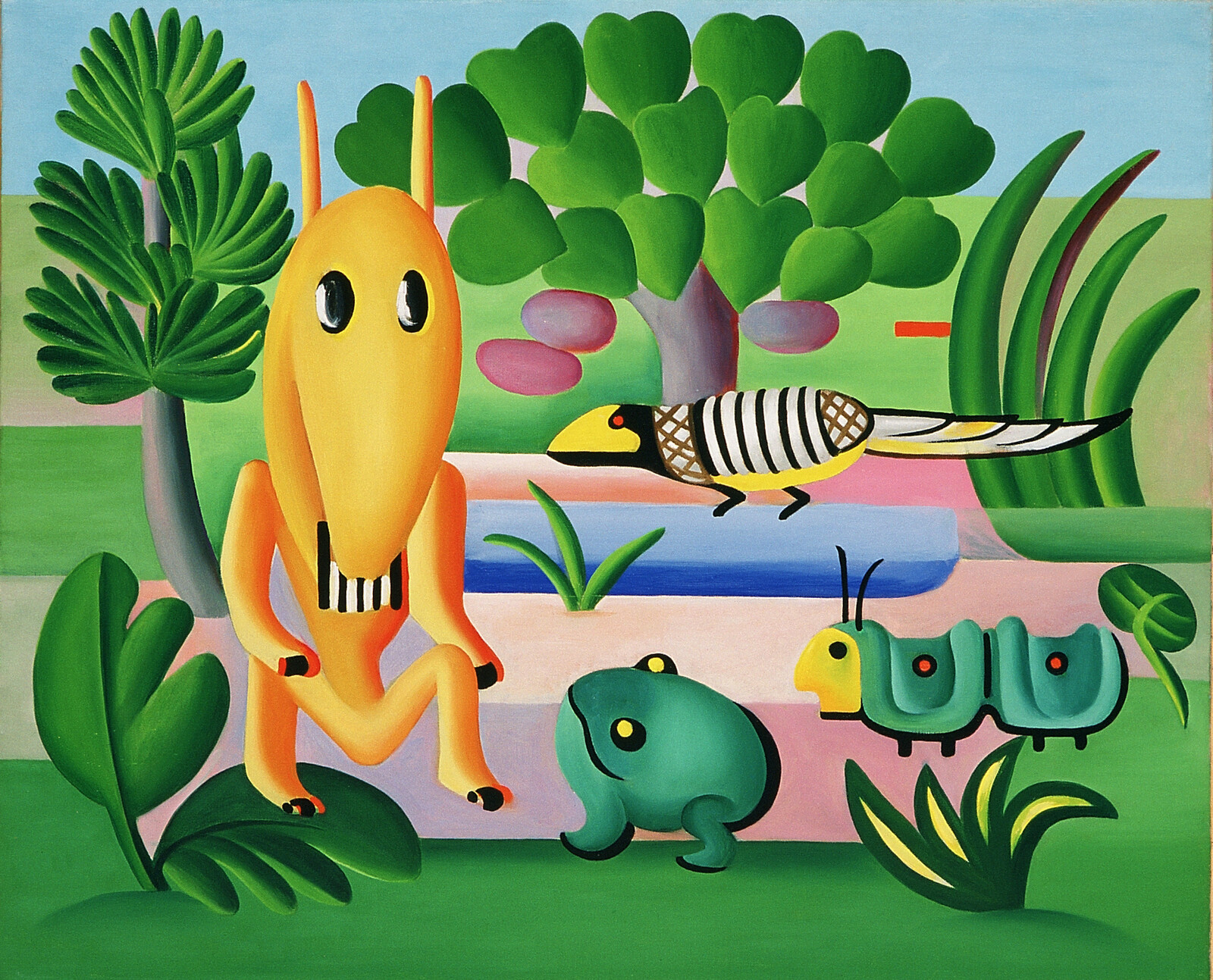Cannibalizing Modernism
April 5–July 28, 2019
Avenida Paulista, 1578
São Paulo-SP
01310200
Brazil
Hours: Tuesday 10am–8pm,
Wednesday–Sunday 10am–6pm
T +55 11 3149 5959
imprensa@masp.org.br
This is the most comprehensive exhibition dedicated to the work of Brazilian artist Tarsila do Amaral (1886–1973), a pioneering figure in early 20th century Latin American art and who is currently being reassessed in the context of global modernisms. After studying with Fernand Léger (1881–1955) and André Lhote (1885–1962) in Paris, Tarsila, as she is widely known in Brazil, cannibalized modern European references to create a unique style of her own, true to her origins both in form and content, through the use of caipira [Brazilian countryside] colors, as well as representations of typical and local characters, scenes, and narratives. Much of her work was made in dialogue with two leading modernist intellectuals of her time: Mário de Andrade (1893–1945) and Oswald de Andrade (1890–1954). Tarsila’s work parallels the development of Oswald de Andrade’s antropofagia, a key concept in 20th-century Latin American thought. Antropofagia could be understood as a poetic program through which intellectuals in the tropics would cannibalize European cultural references in order to metabolize and produce something singular and hybrid of their own, bringing indigenous, Afro-Atlantic, and local elements into their work.
The focus of the exhibition is the popular, or the vernacular, a notion as complex in Brazil as it is contested, and which Tarsila explored in different ways throughout her career—the exhibition’s title in Portuguese is Tarsila popular. The popular is associated with debates on national identity and the invention or construction of brasilidade [Brazilianness]. In Tarsila, the popular is manifested in landscapes of the countryside or the suburbs, the farm or the favela, populated by people of indigenous or African descent, characters from Brazilian folklore, full of animals and plants, both real and fantastic. Tarsila’s palette is also distinctly popular, taking inspiration from Brazilian countryside colors found in architecture and decorative arts: “pure blue, violaceous rose, bright yellow, singing green,” in her own words.
Much of the art criticism on Tarsila in Brazil has emphasized her French affiliations and genealogies, possibly in search of the artist’s international legitimization, and thus marginalizing the themes, characters, and popular narratives that she explored. Today, after successful shows in the United States and Europe, we must look at Tarsila and her work in other ways. In this sense, the essays and commentaries on her works included in the exhibition and its accompanying catalog are central elements to this project. It is not by chance that the controversial painting A Negra [The Black Woman] has received special attention from the authors and is a central work in the exhibition. In this sense, the exhibition aims at widening the perspectives from which we may access not only the artist’s work but also the larger narratives on global modernism, taking into account questions of race, class and colonialism.
Tarsila do Amaral: Cannibalizing Modernism is curated by Adriano Pedrosa and Fernando Oliva and is contextualized in a full year dedicated to women artists at MASP in 2019 under the heading Women’s Histories, Feminist Histories. The exhibition dialogues with two others dedicated to artists who explored the notion of the popular through different approaches: Djanira: Picturing Brazil, on view through May 19, and Lina Bo Bardi: Habitat, on view through July 28.
The accompanying publication is the most comprehensive exhibition catalog on Tarsila to date. With separate editions in Portuguese and in English, 360 pages each, it reproduces 113 of her works, as well as documents and photographs. The book features newly commissioned essays by Adriano Pedrosa, Amanda Carneiro, Fernando Oliva, Irene V. Small, Mari Rodríguez Binnie, Maria Bernardete Ramos Flores, Maria Castro, Michele Greet, Michele Bete Petry and Renata Bittencourt, historical texts by Paulo Herkenhoff and Sergio Miceli, and commentaries on Tarsila’s works by Artur Santoro, Carlos Eduardo Riccioppo, Guilherme Giufrida, and Matheus de Andrade.
Tarsila do Amaral: Cannibalizing Modernism
ISBN: 978-85-310-0070-6
Tarsila popular
ISBN: 978-85-310-0069-0
To view installations shots and works in the exhibition click here.
For further information about the publications, please contact loja [at] masp.org.br
Hours: Wednesday–Sunday 10am–6pm
Tuesday 10am–8pm
T +55 11 3149 5959
Press requests
T +55 11 3149 5898
imprensa [at] masp.org.br


